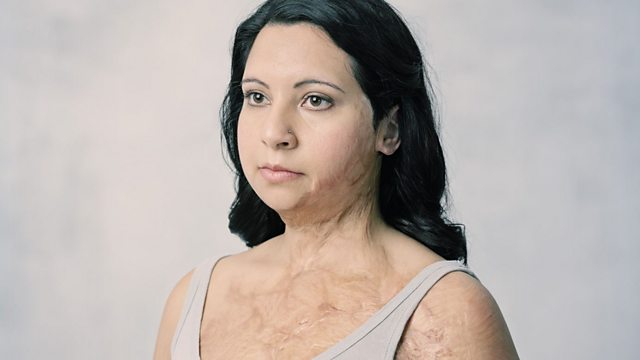Why do physical scars matter?
Physical scars can be sources of shame or badges of honour. What do they tell us about ourselves and our place in the world?
Physical scars can be sources of shame or badges of honour: acquired accidentally or a cry for help. How should we read them, and what do they tell us about ourselves and our place in the world?
We explore the practice of scarification, intentional body modification which has been practised for millennia, where scars denote status within tribal communities and are worn with pride. Brent Kerehona tells us about the type of scarification he has: Ta Moko.
We meet stuntman Andreas Petrides, who has been Obi-Wan Kenobi鈥檚 stunt double. He also wears his scars with pride, but for different reasons: they are trophies of his profession.
For millions, scars can be sources of embarrassment. We examine the constructs of beauty that might underpin those feelings. We speak to Hemani Modasia, who suffered scarring from burns to 35% of her body when she was a child, and who wishes, ultimately, she never had them. Scars can also be interpreted as a cry for help, transversing the space between the physical and the deeply emotional. Japanese photographer Kosuke Okahara tells us about his project which captured the scars of Japanese women who suffered from self-harm across a period of 6 years.
Former Vogue editor Jackie Dixon, tells us the fashion industry is now embracing scars - they are part of the zeitgeist. We spoke to Jackie at a photoshoot in central London, where she was photographing a model for a book she is producing that celebrates scars.
The programme also hears from Professor Parashkev Nachev, a neurologist at University College London, and Nichola Rumsey, founder of the Centre for Appearance Research at the University of the West of England. Parashkev tells us the creation of scars is not fully captured by science, suggesting they are both deeply mysterious and profoundly human. Nichola places scars in a social context, and points out they often render us outliers which, for many people, is challenging and uncomfortable.
Presenter: Christopher Gunness
Producer: Oliver Newlan
Editor: Carl Johnston
(Image: Hemani Modasia. Credit: Spencer Murphy for the Scar Free Foundation)
Last on
More episodes
Previous
Broadcasts
- Mon 20 Jan 2020 09:06GMT大象传媒 World Service East and Southern Africa & East Asia only
- Mon 20 Jan 2020 13:32GMT大象传媒 World Service except News Internet
- Mon 20 Jan 2020 18:06GMT大象传媒 World Service Australasia
- Mon 20 Jan 2020 21:06GMT大象传媒 World Service East and Southern Africa & West and Central Africa only
- Mon 20 Jan 2020 23:06GMT大象传媒 World Service except East and Southern Africa & West and Central Africa
- Tue 21 Jan 2020 02:32GMT大象传媒 World Service except West and Central Africa
- Tue 21 Jan 2020 03:32GMT大象传媒 World Service West and Central Africa
- Sun 26 Jan 2020 05:32GMT大象传媒 World Service Europe and the Middle East
Get the podcast
Subscribe or download individual episodes for free
Why do we look the way we do?
Tattoos, trainers, jeans, hair, ties ... why?
Podcast
-
![]()
The Why Factor
The extraordinary and hidden histories behind everyday objects and actions


